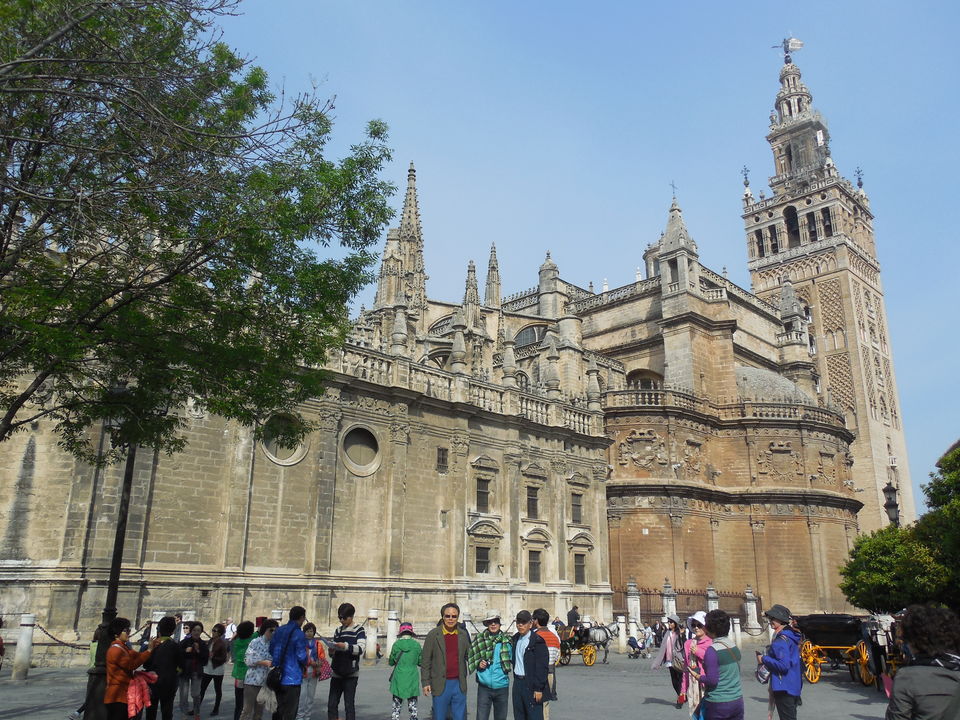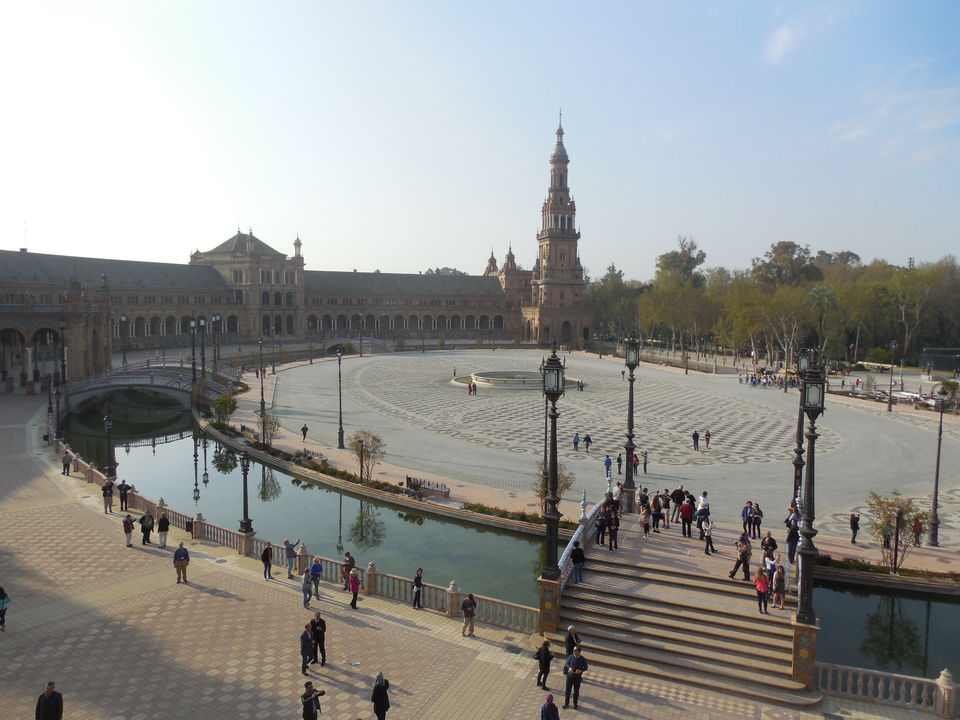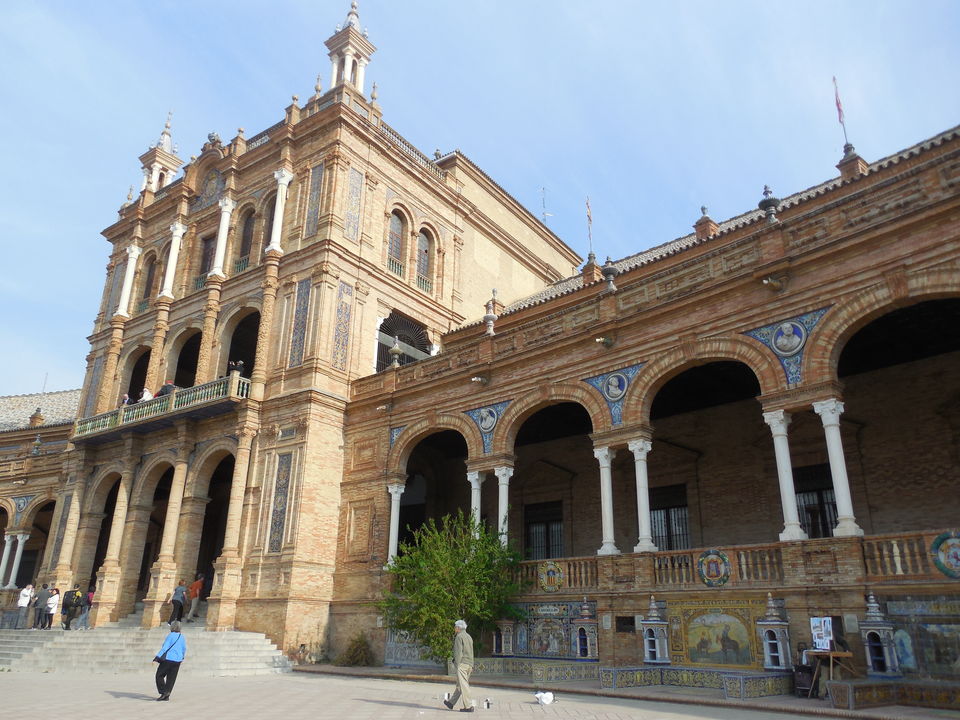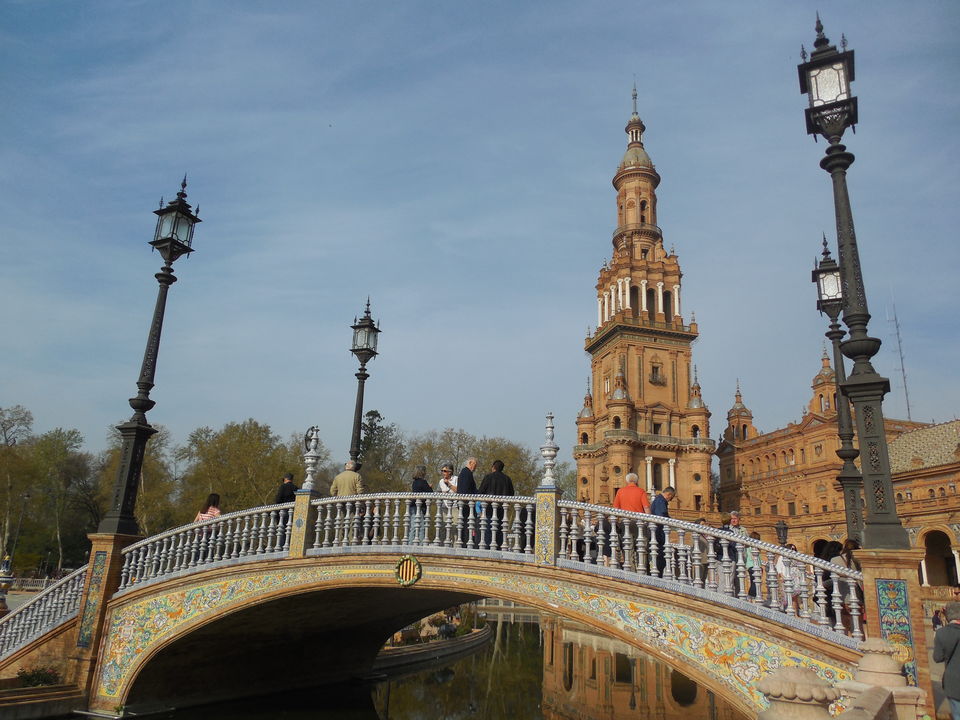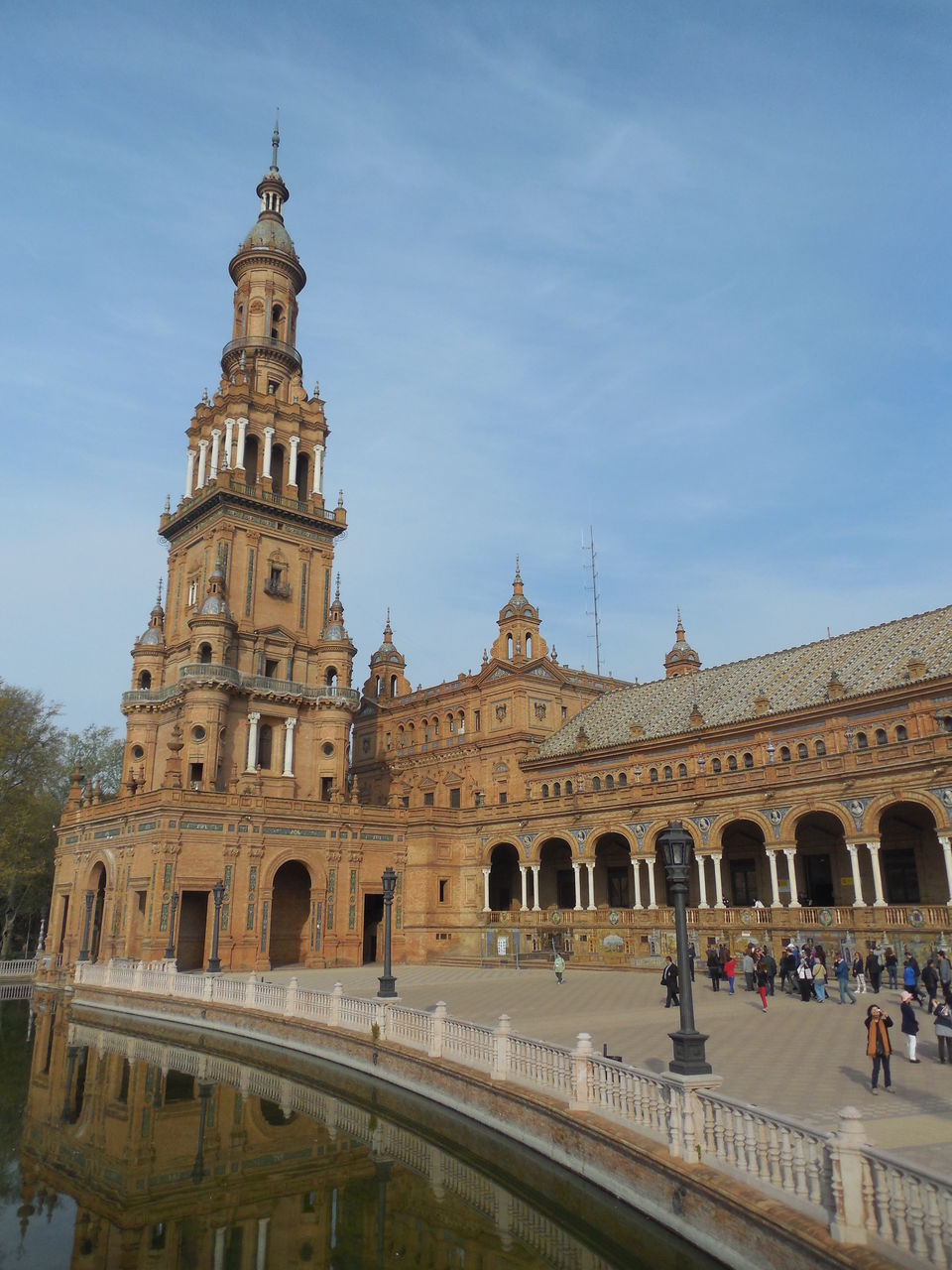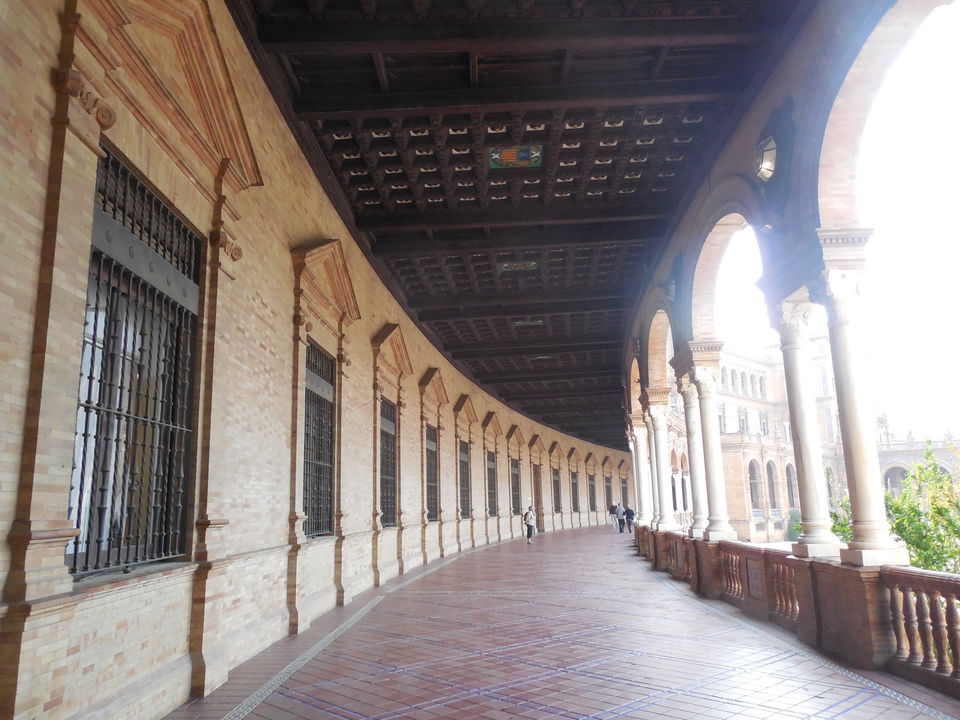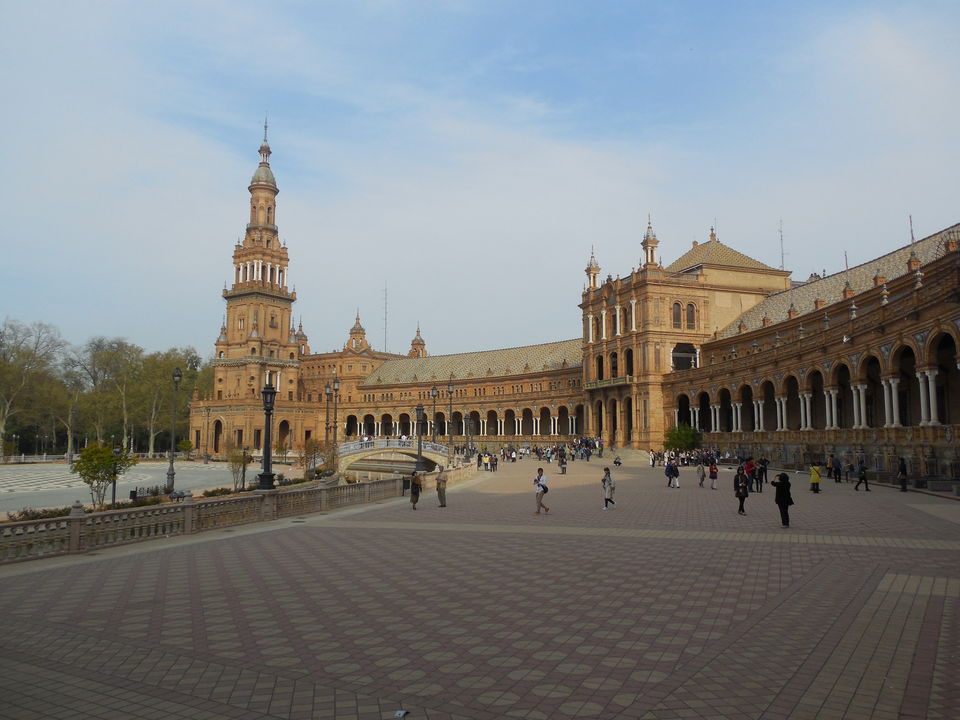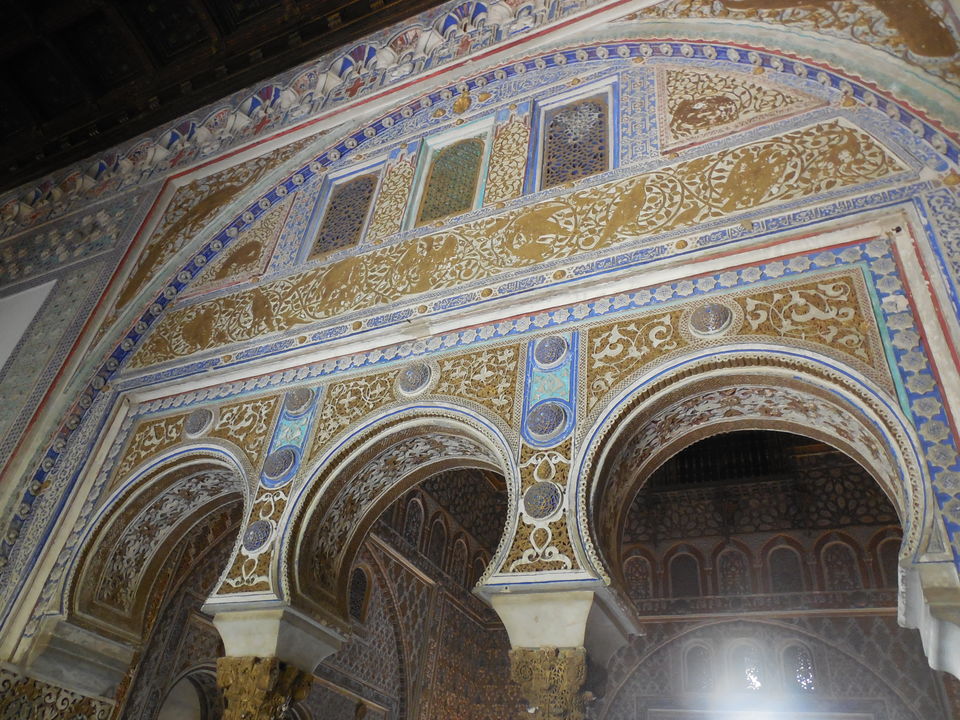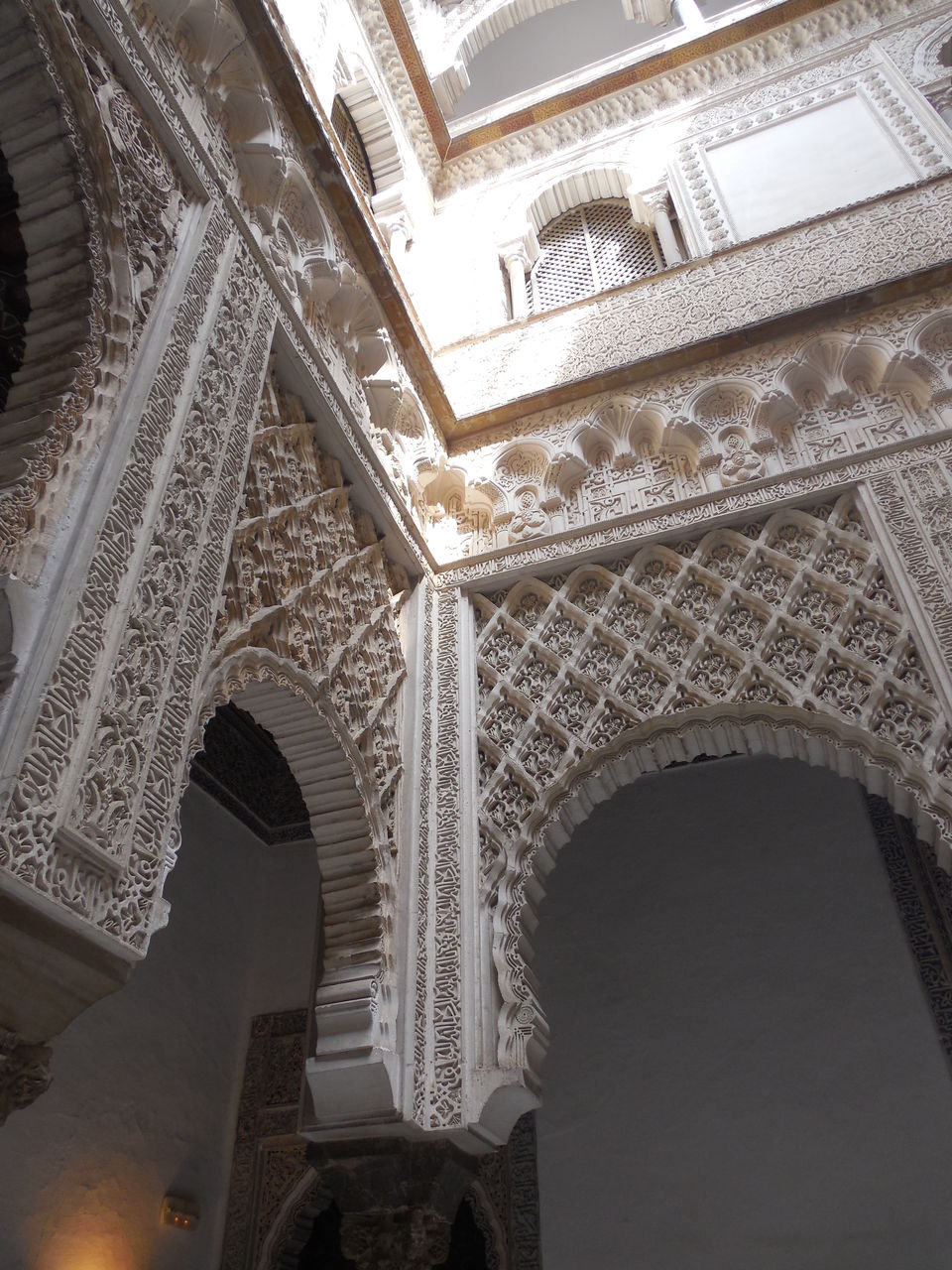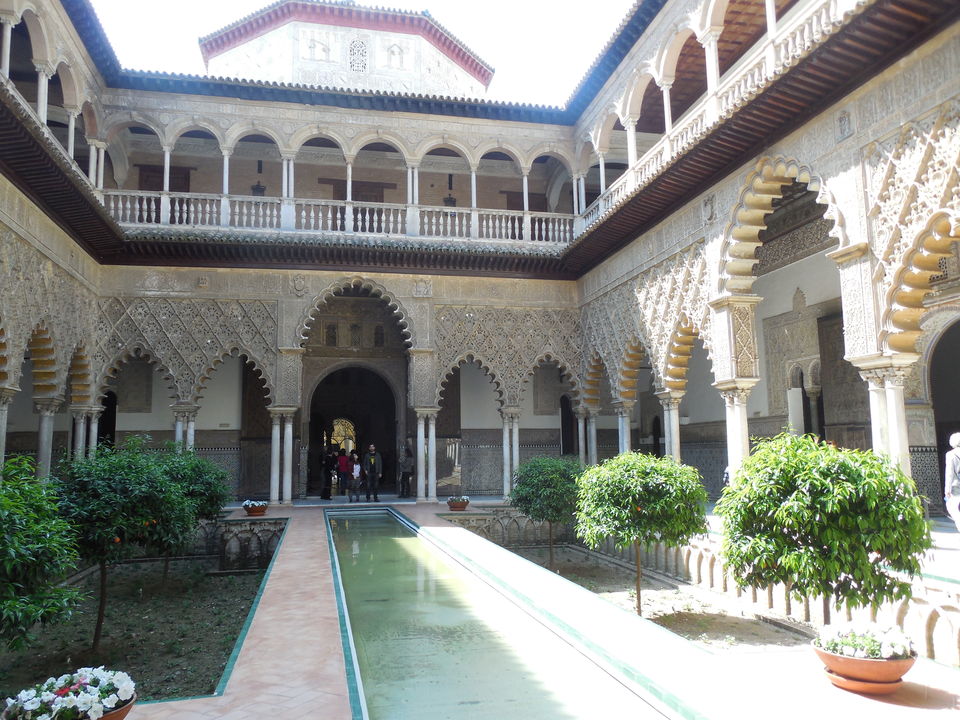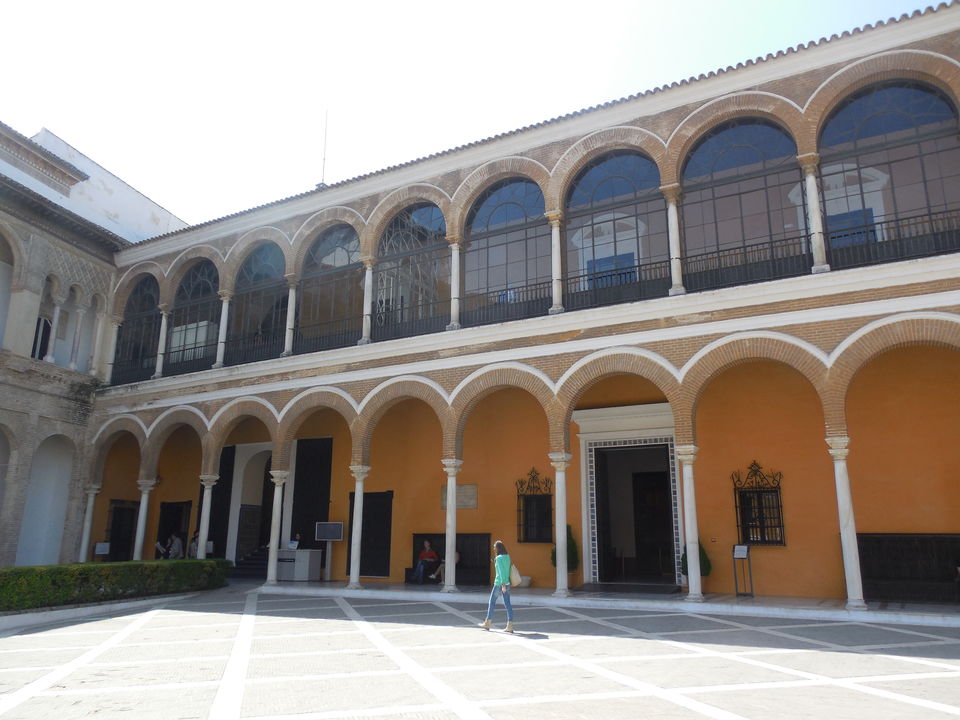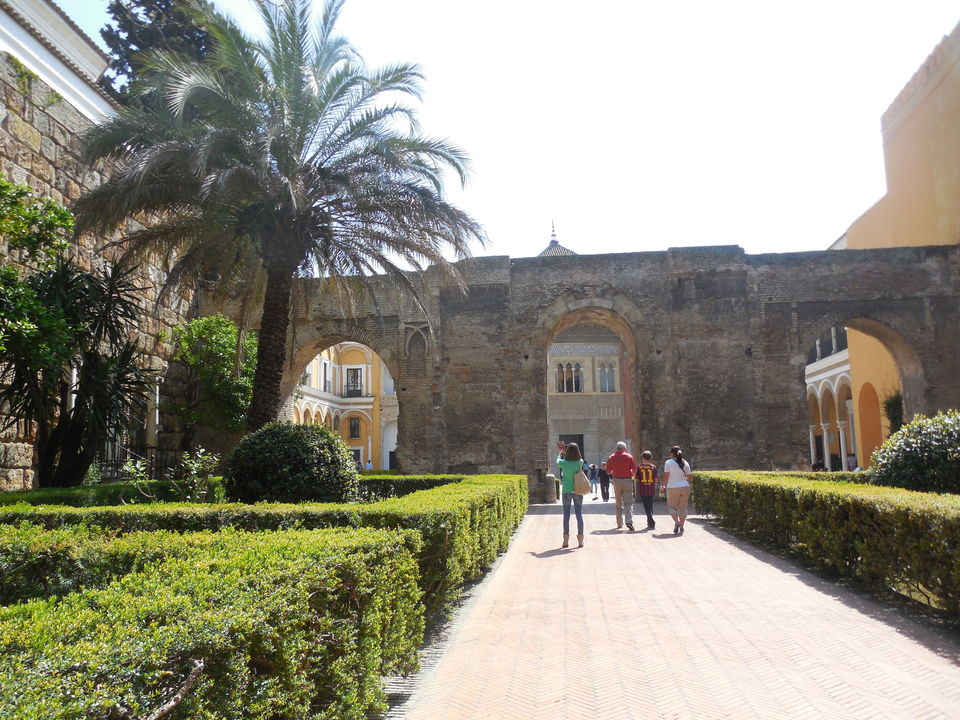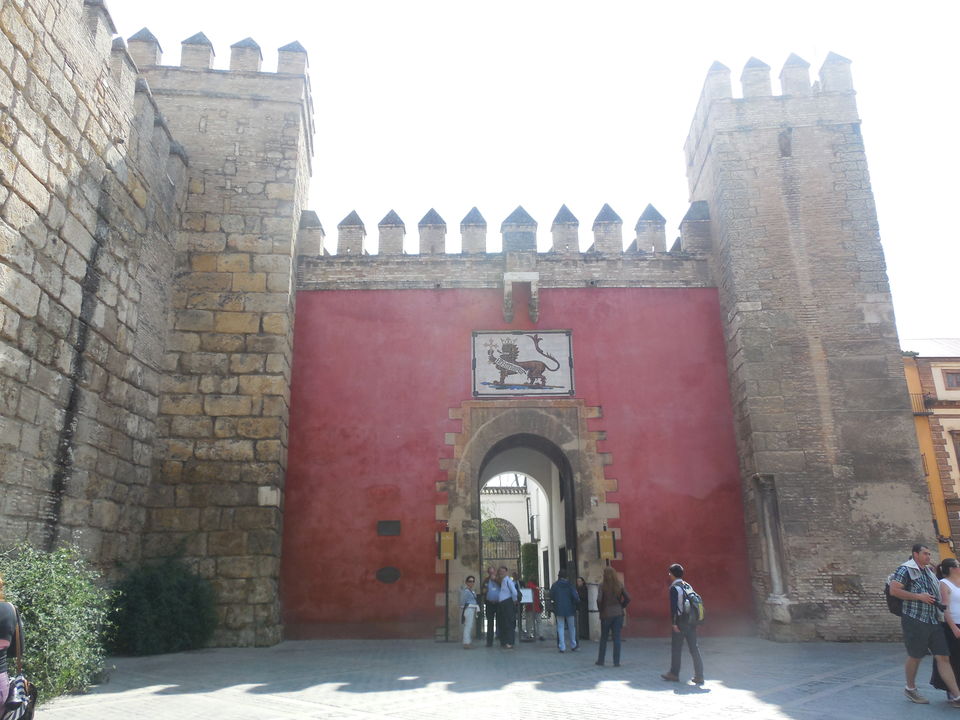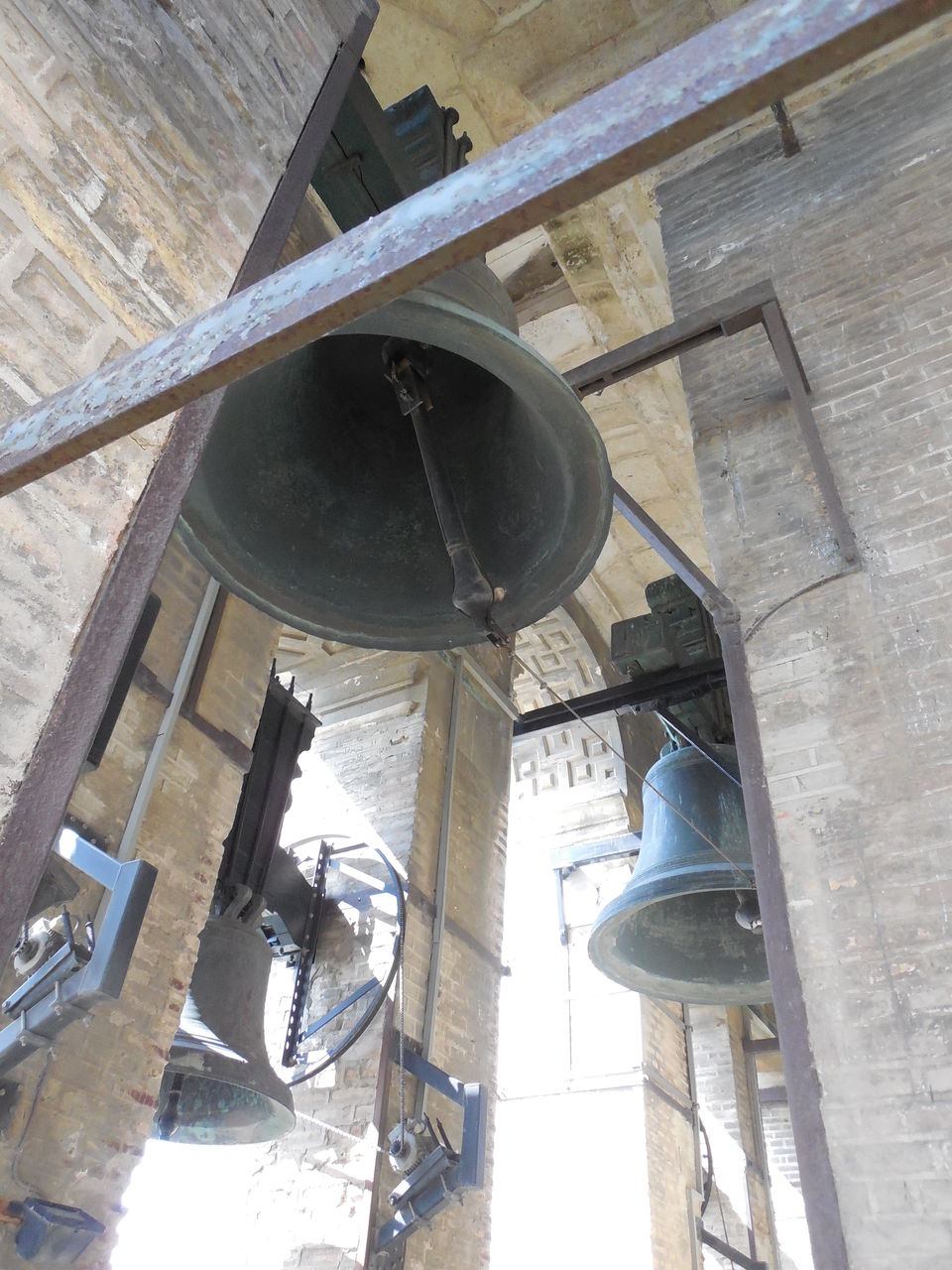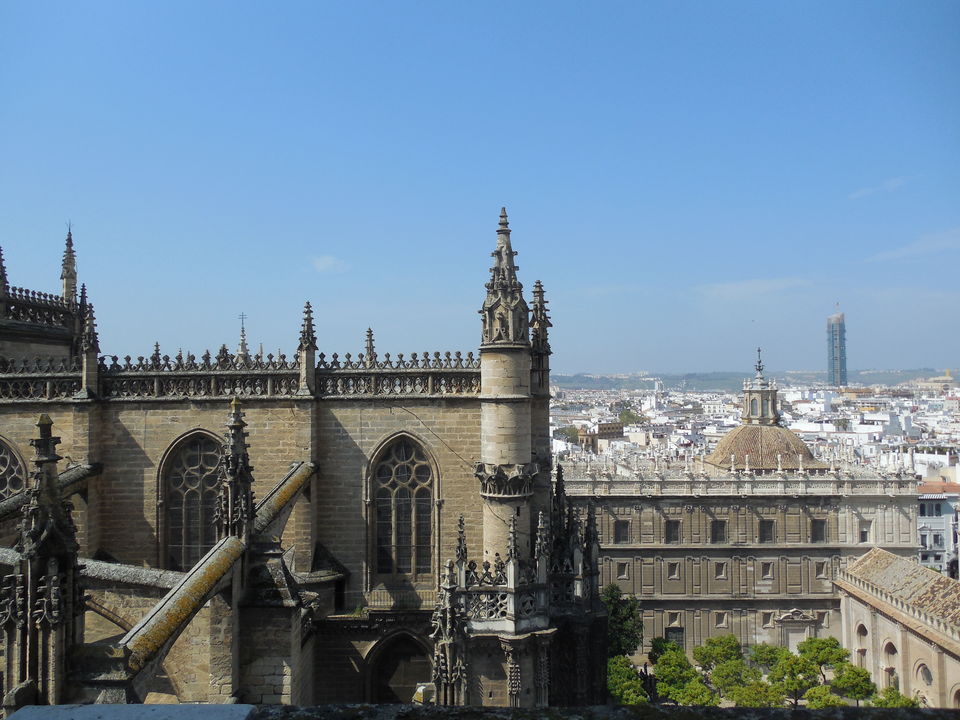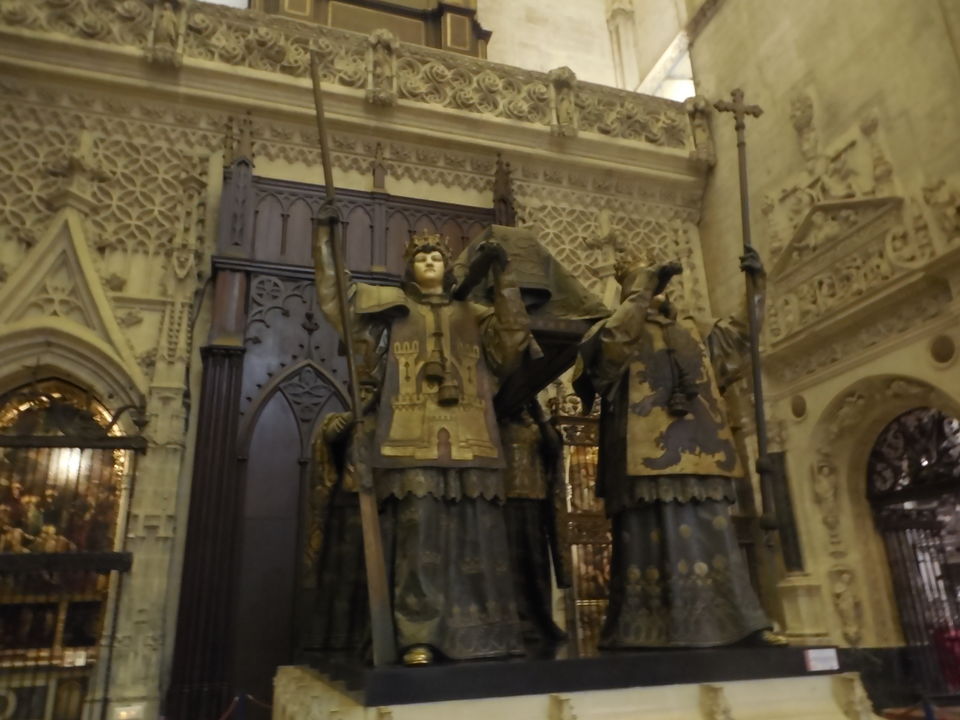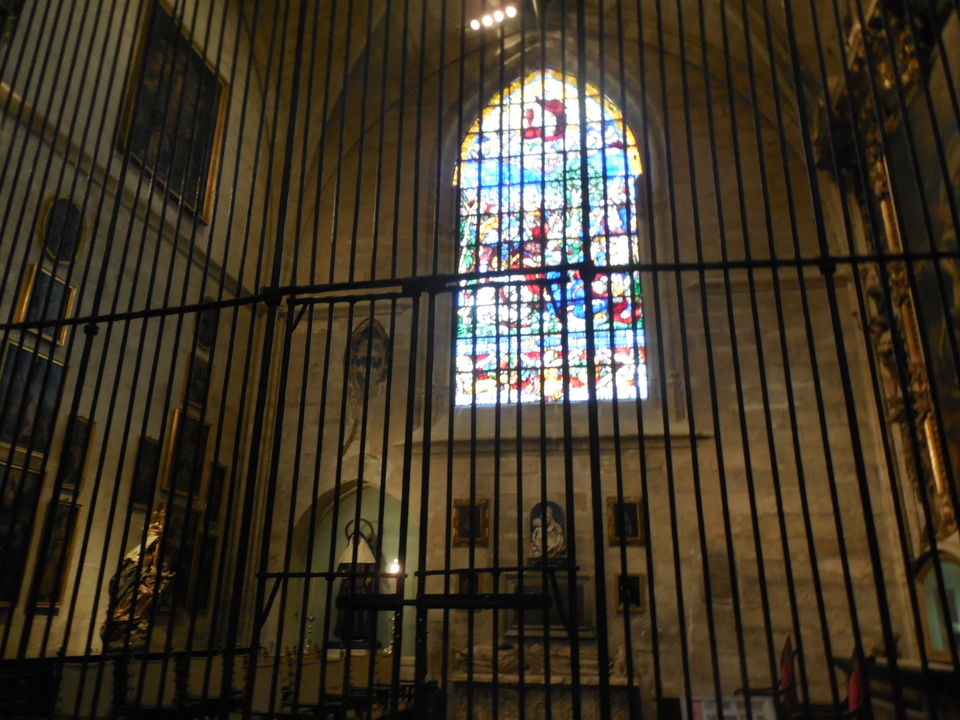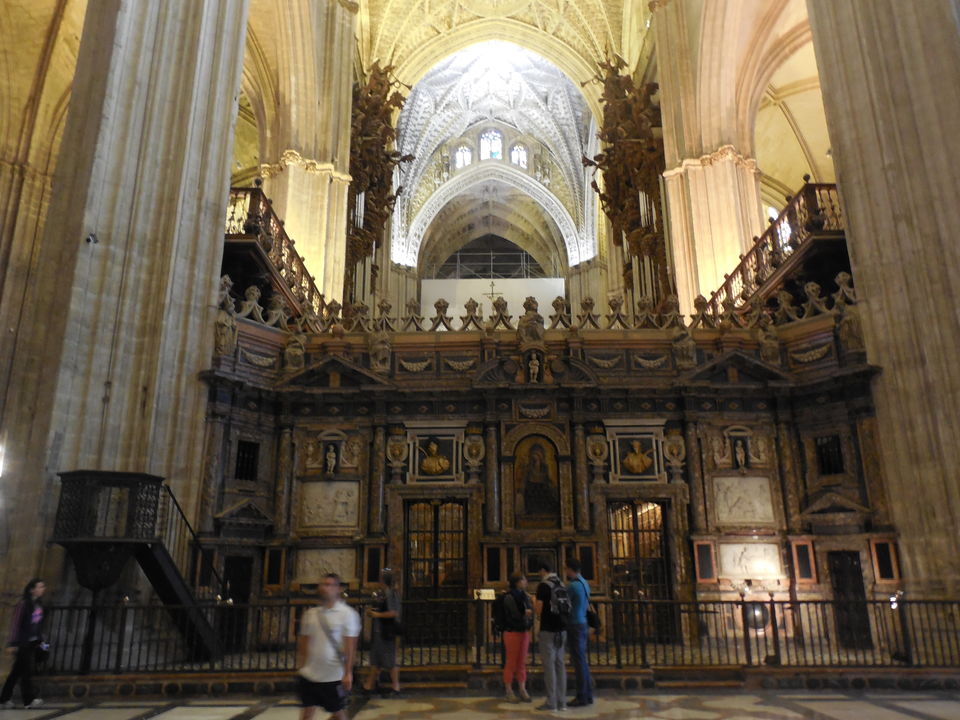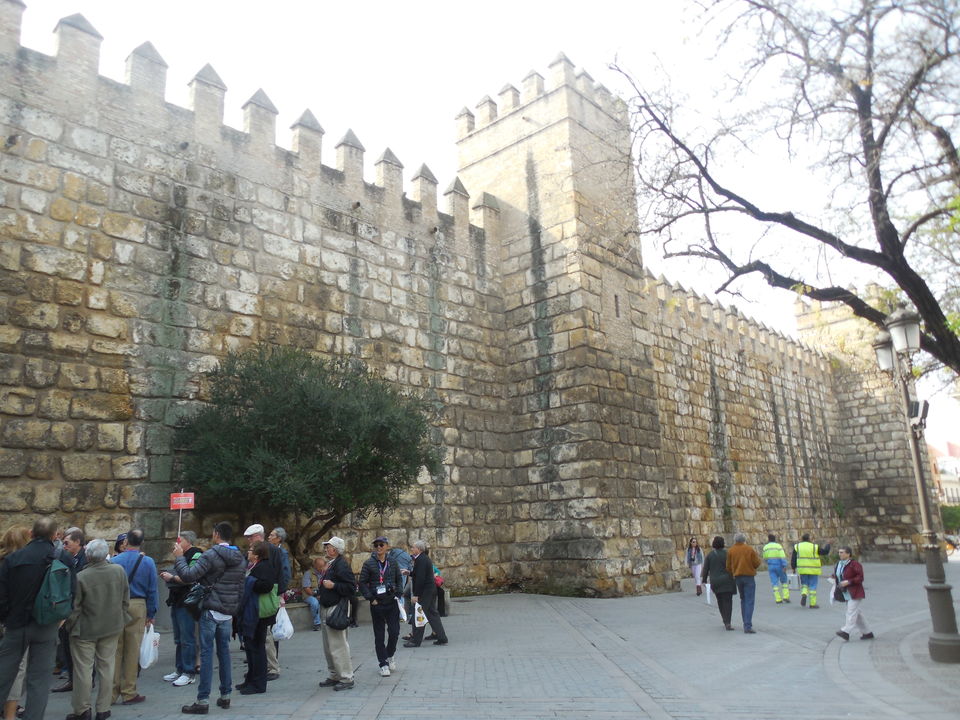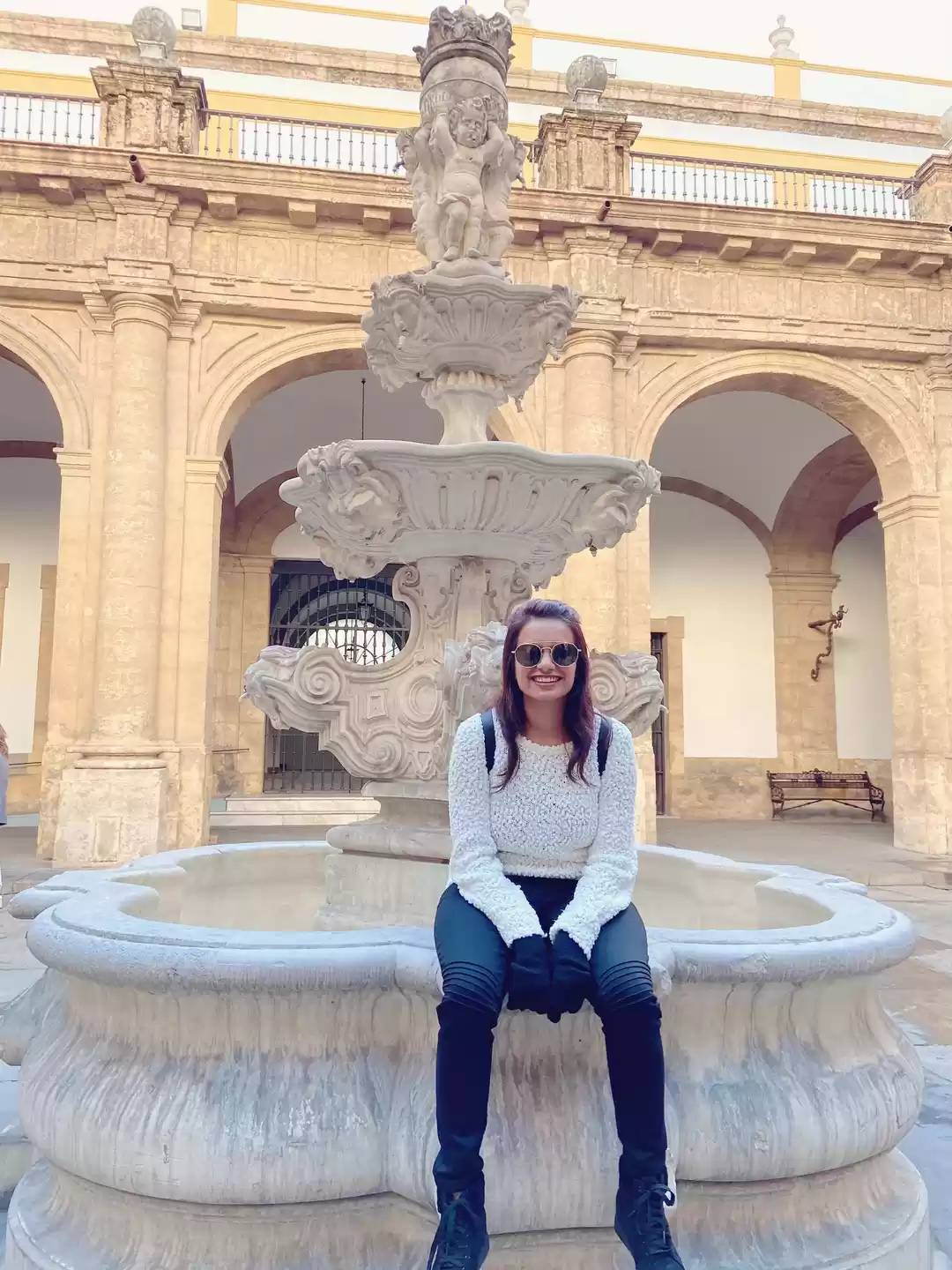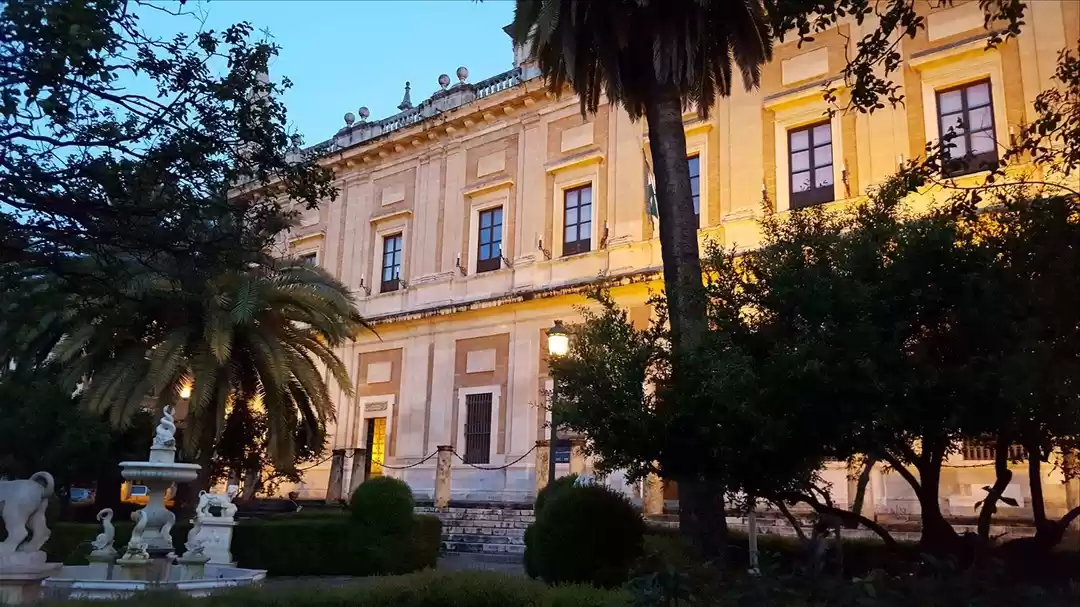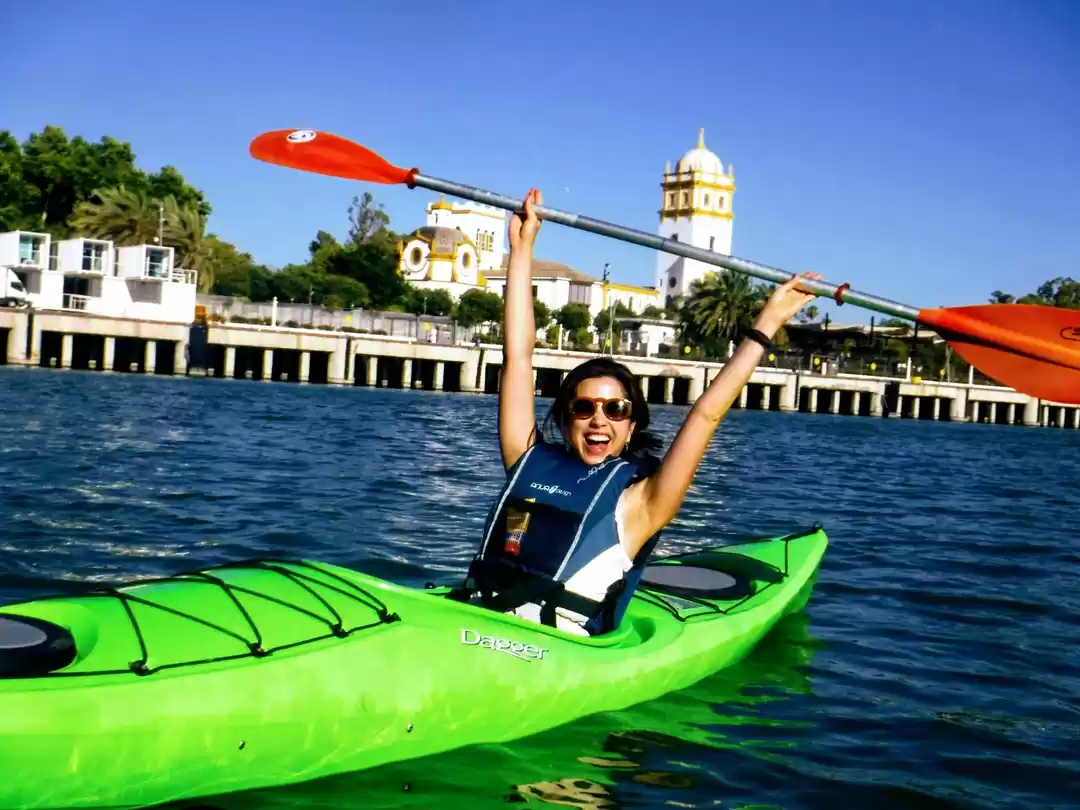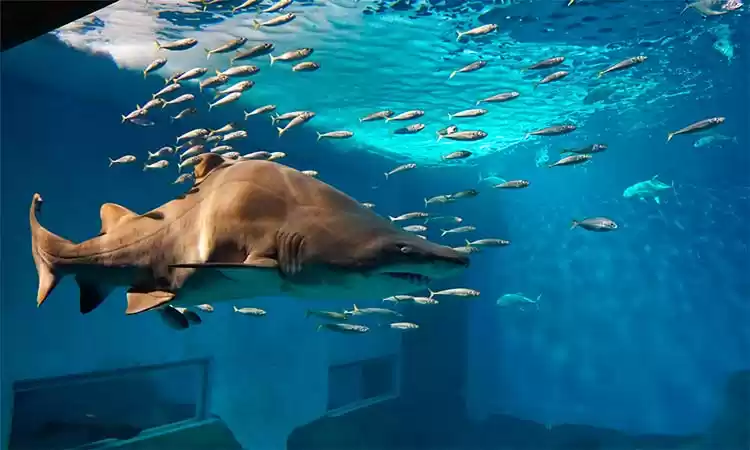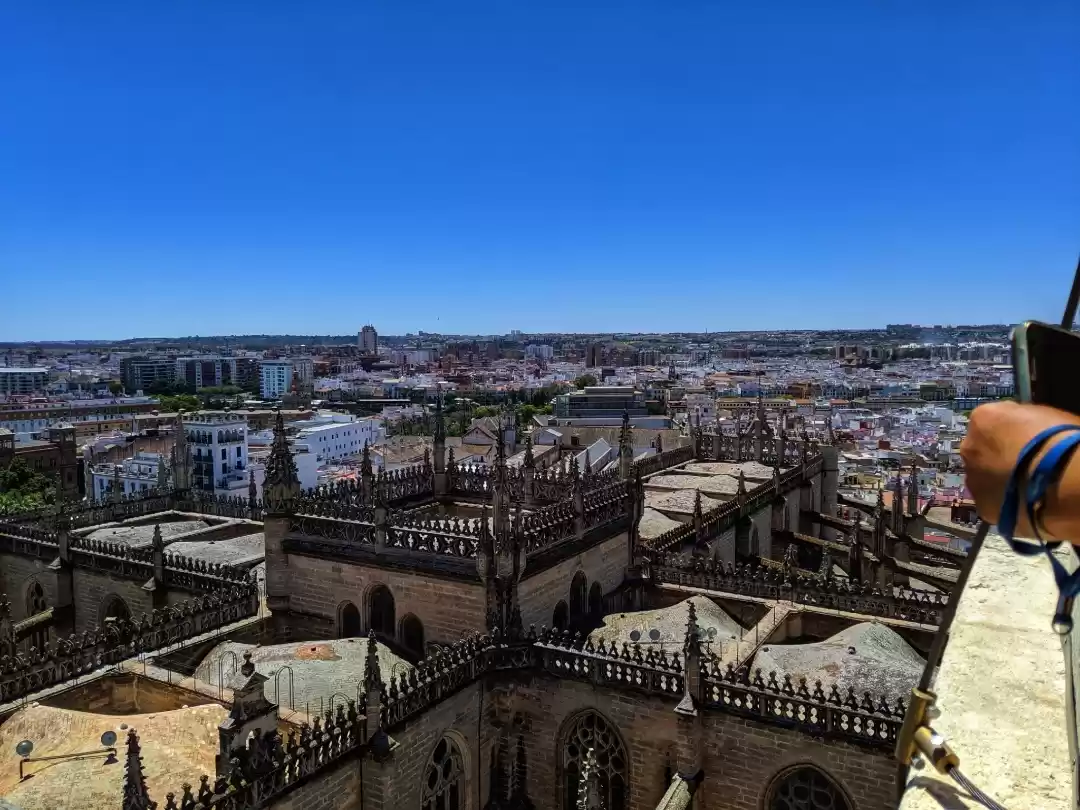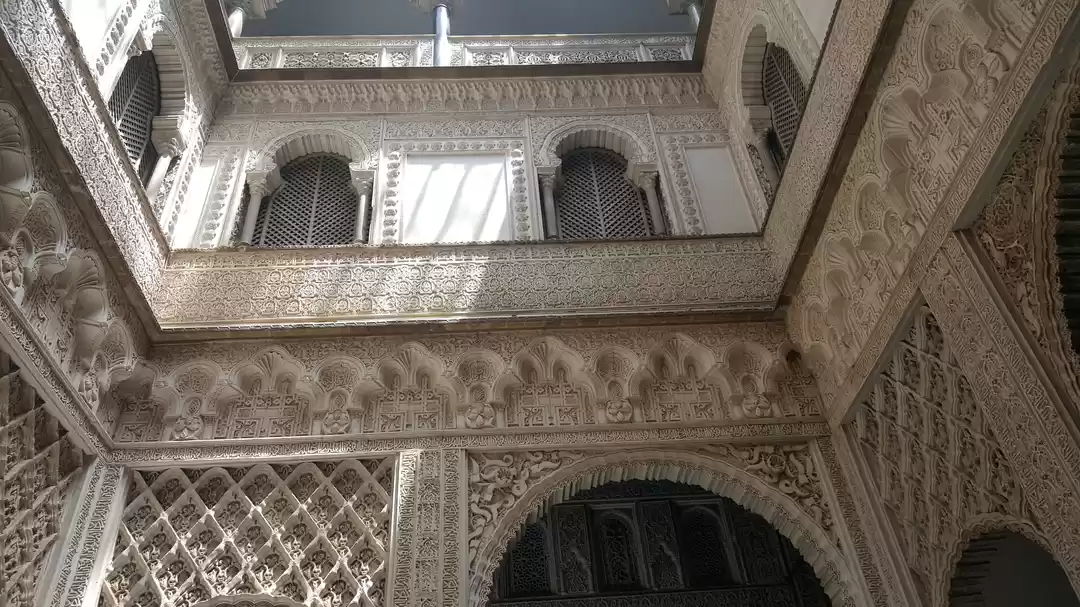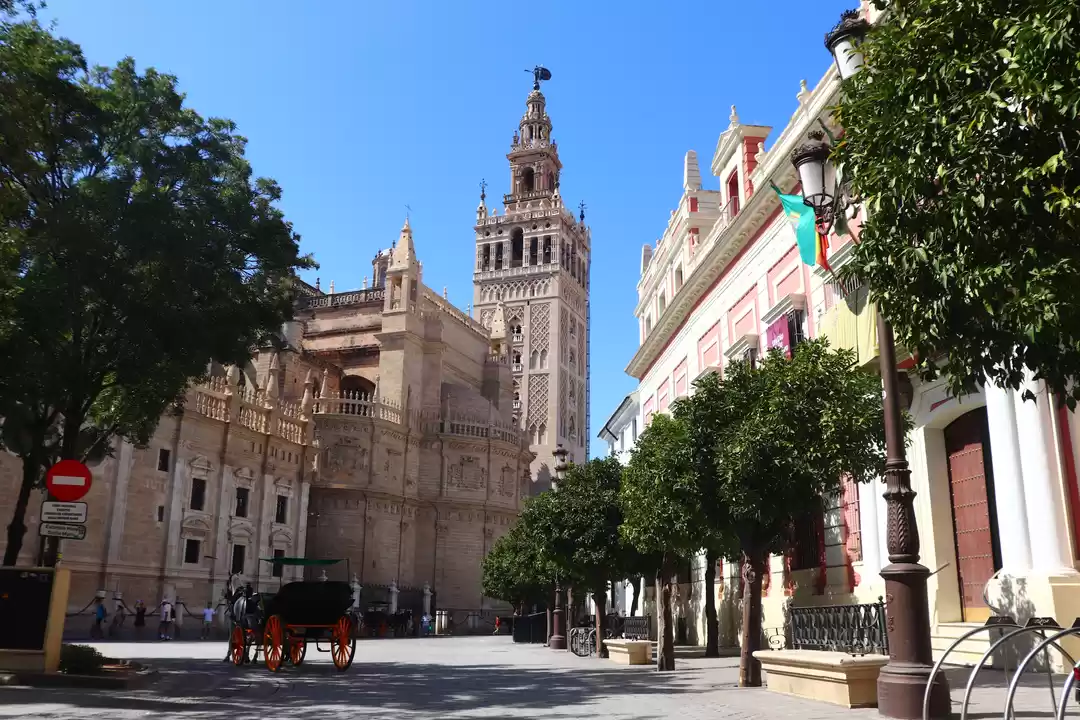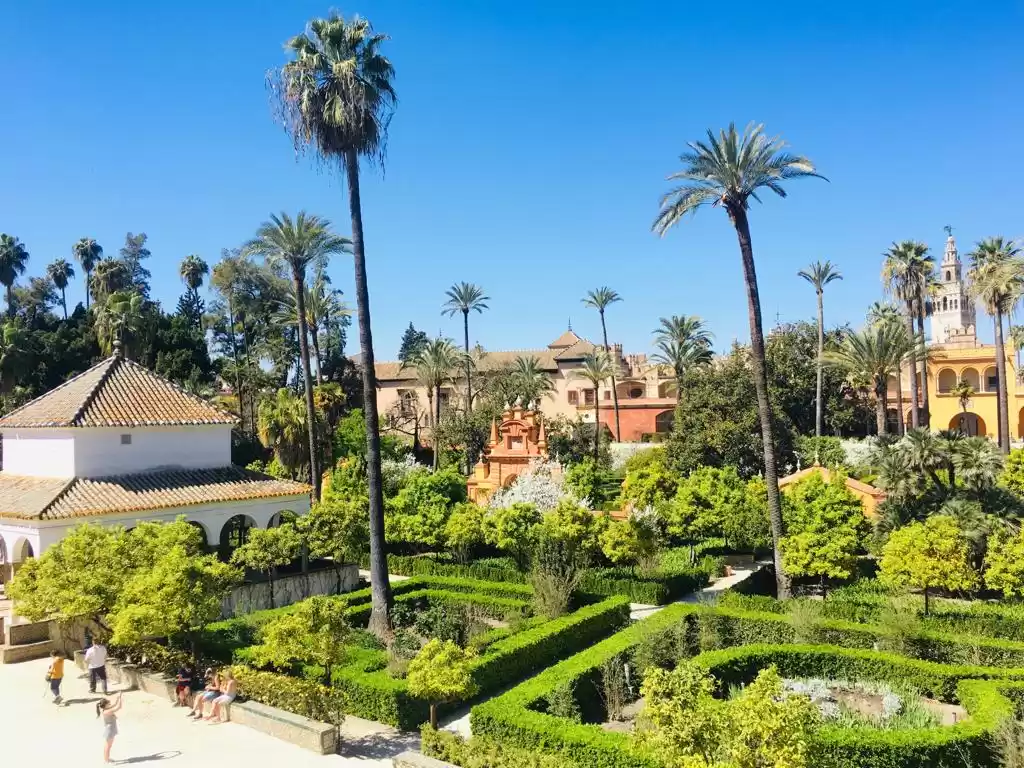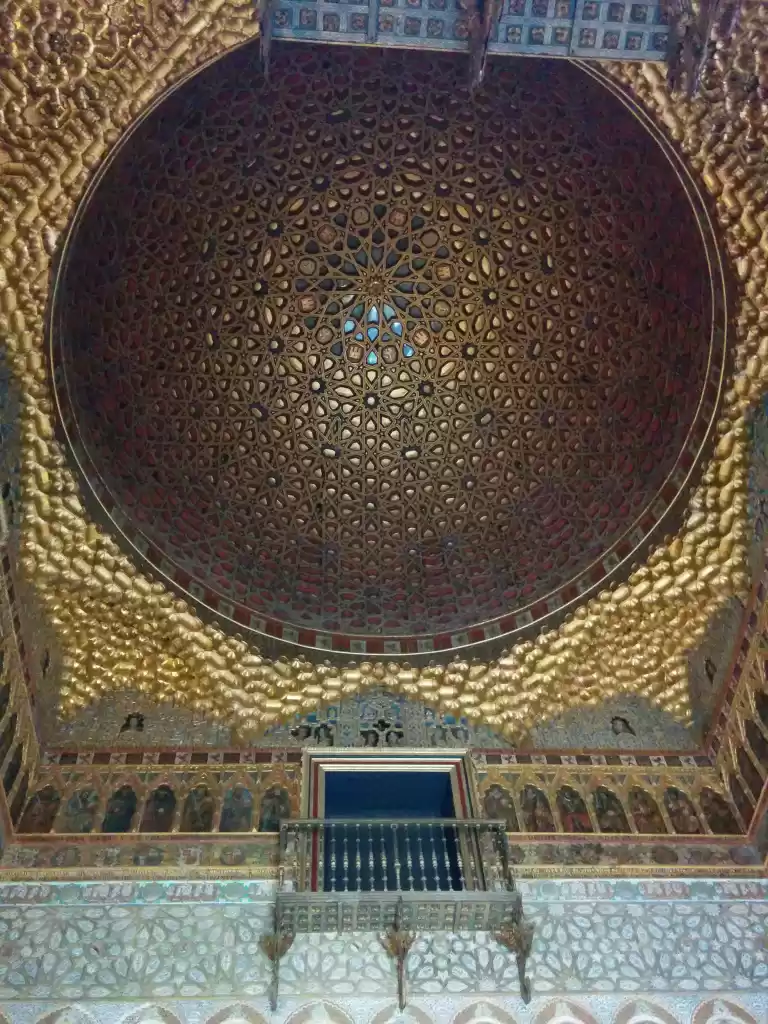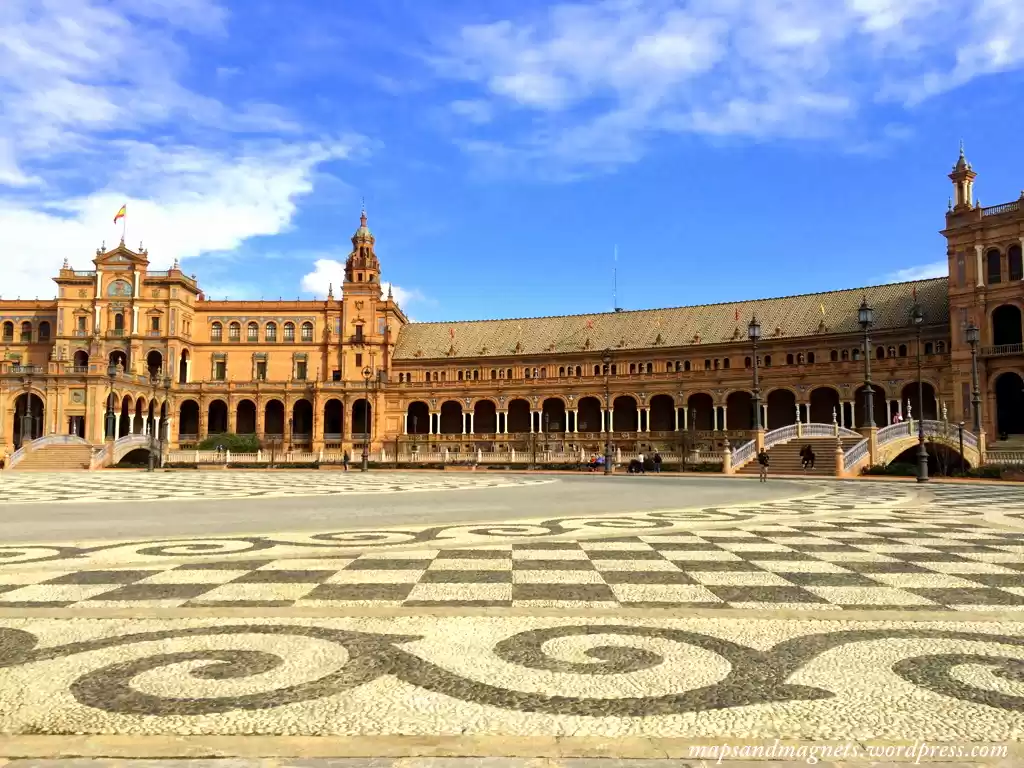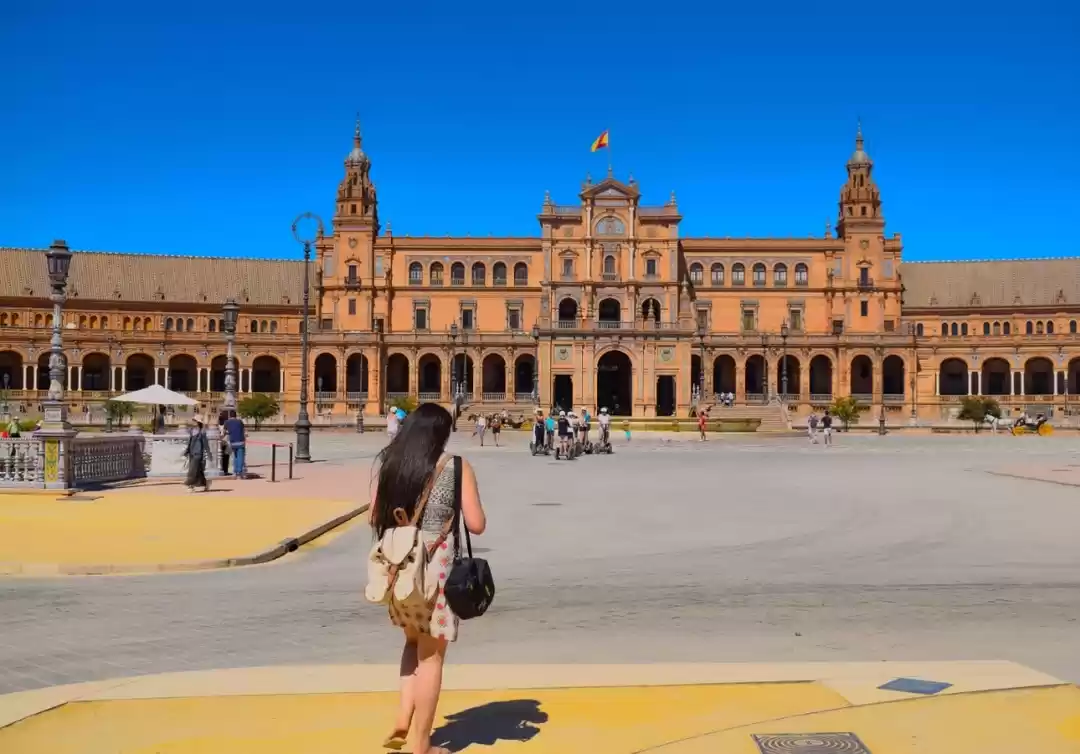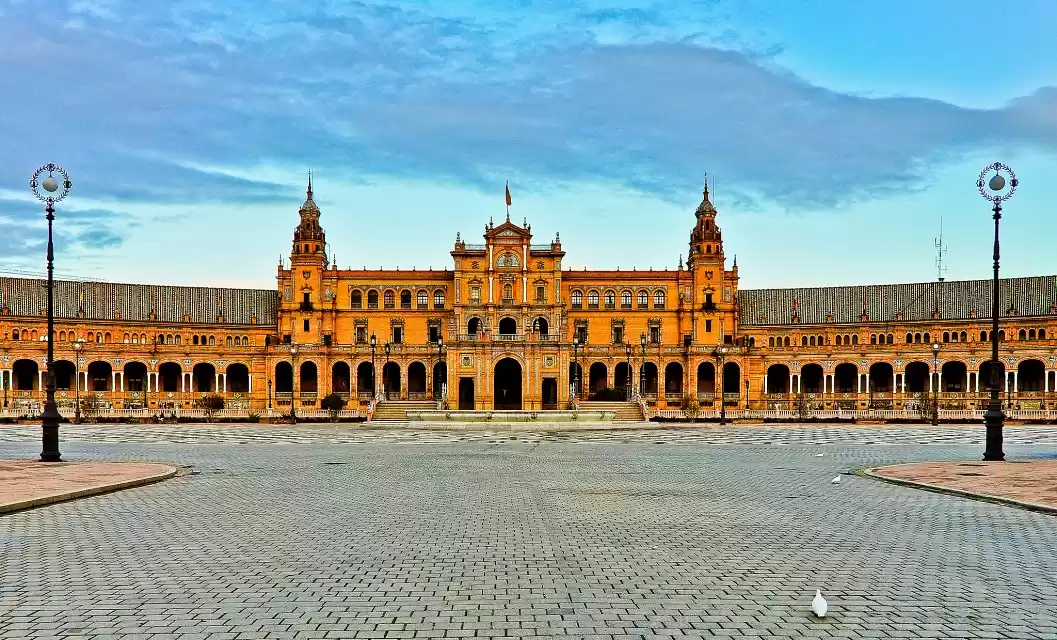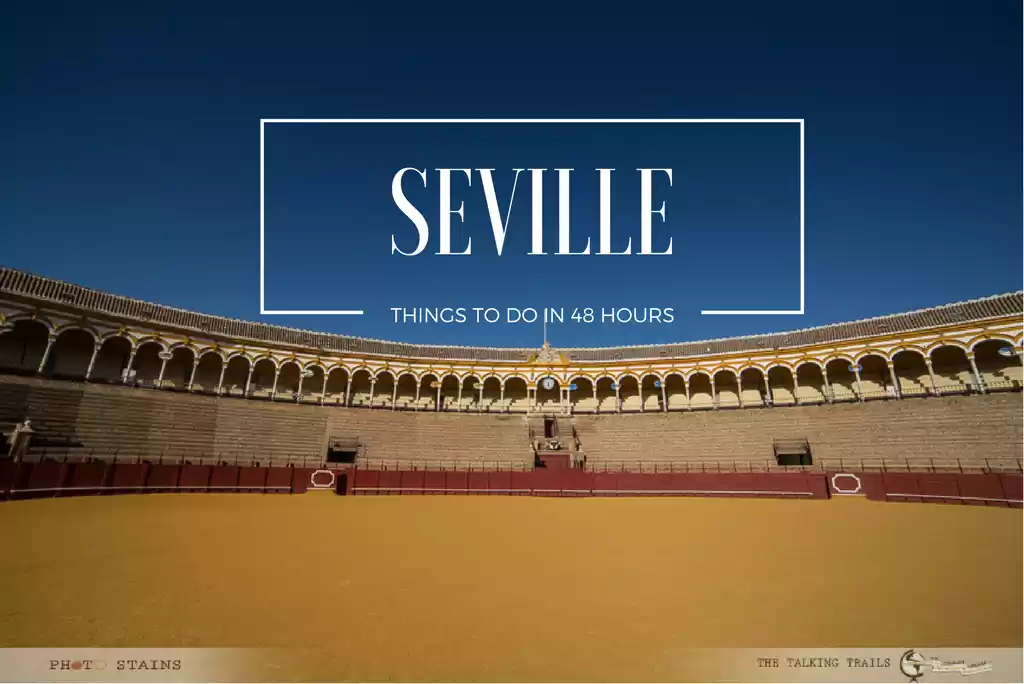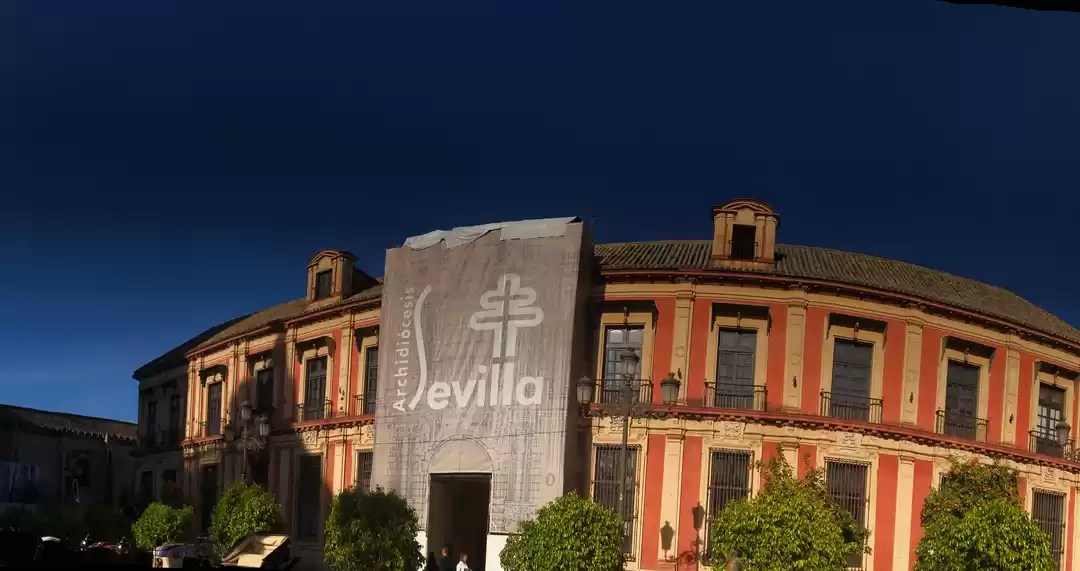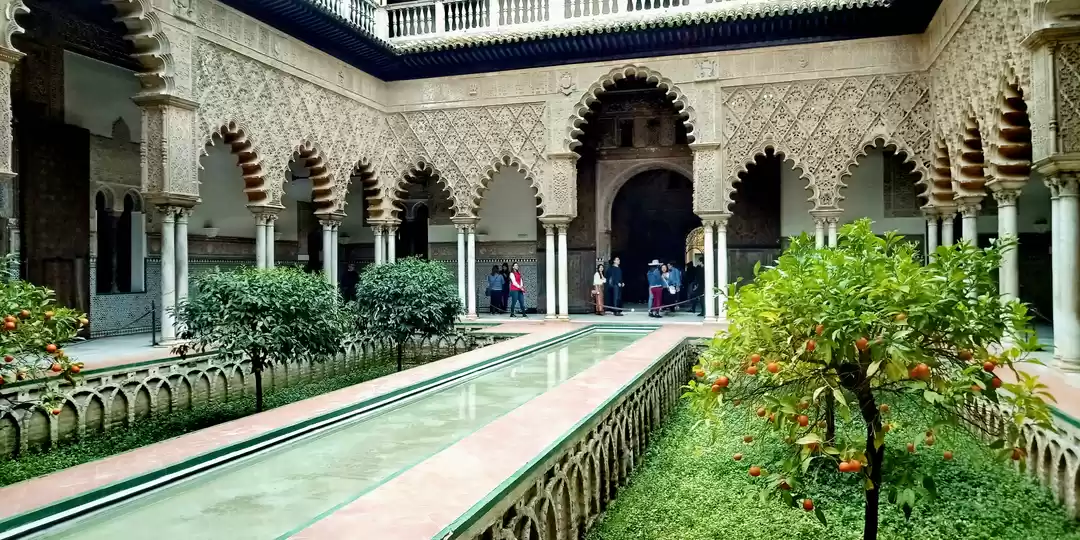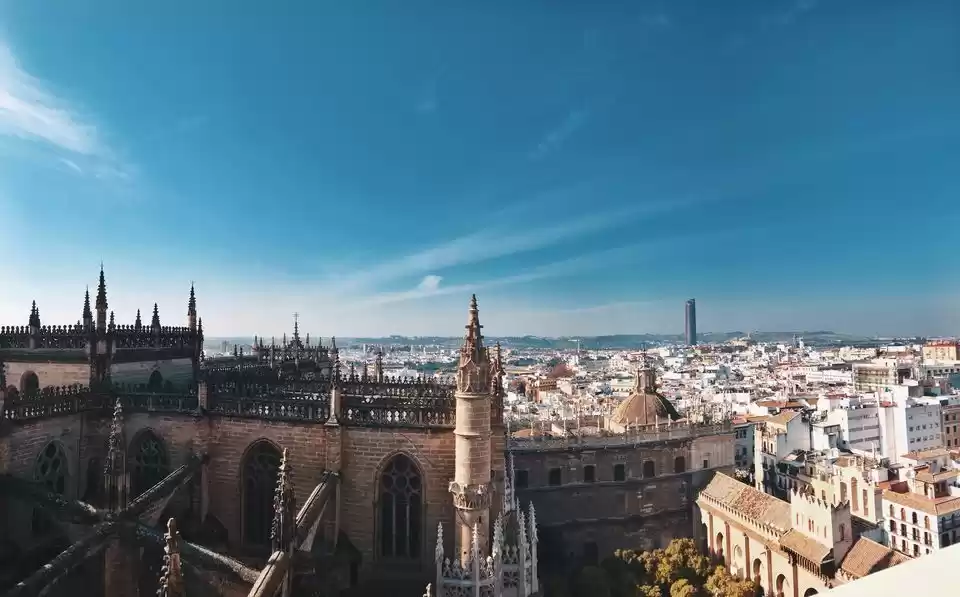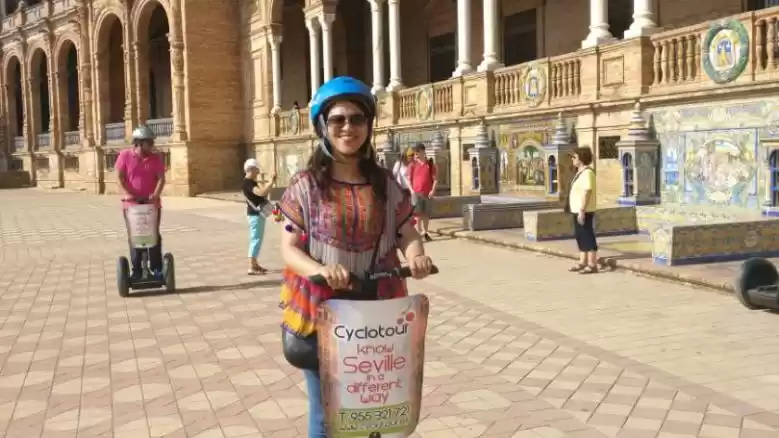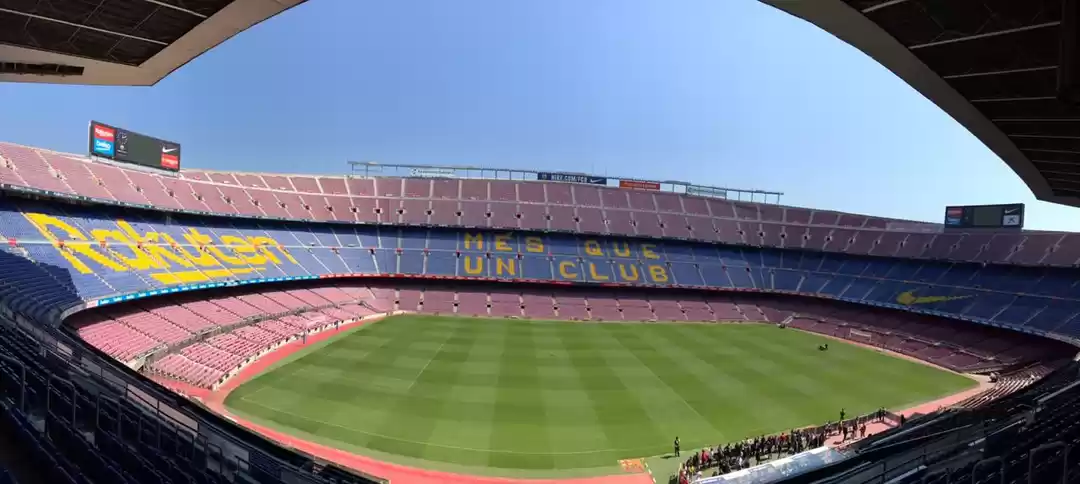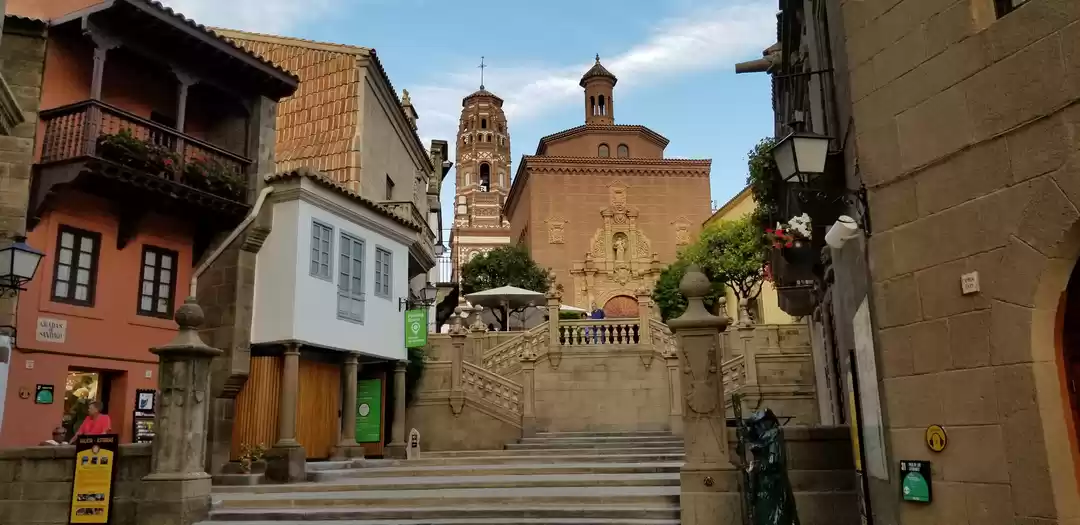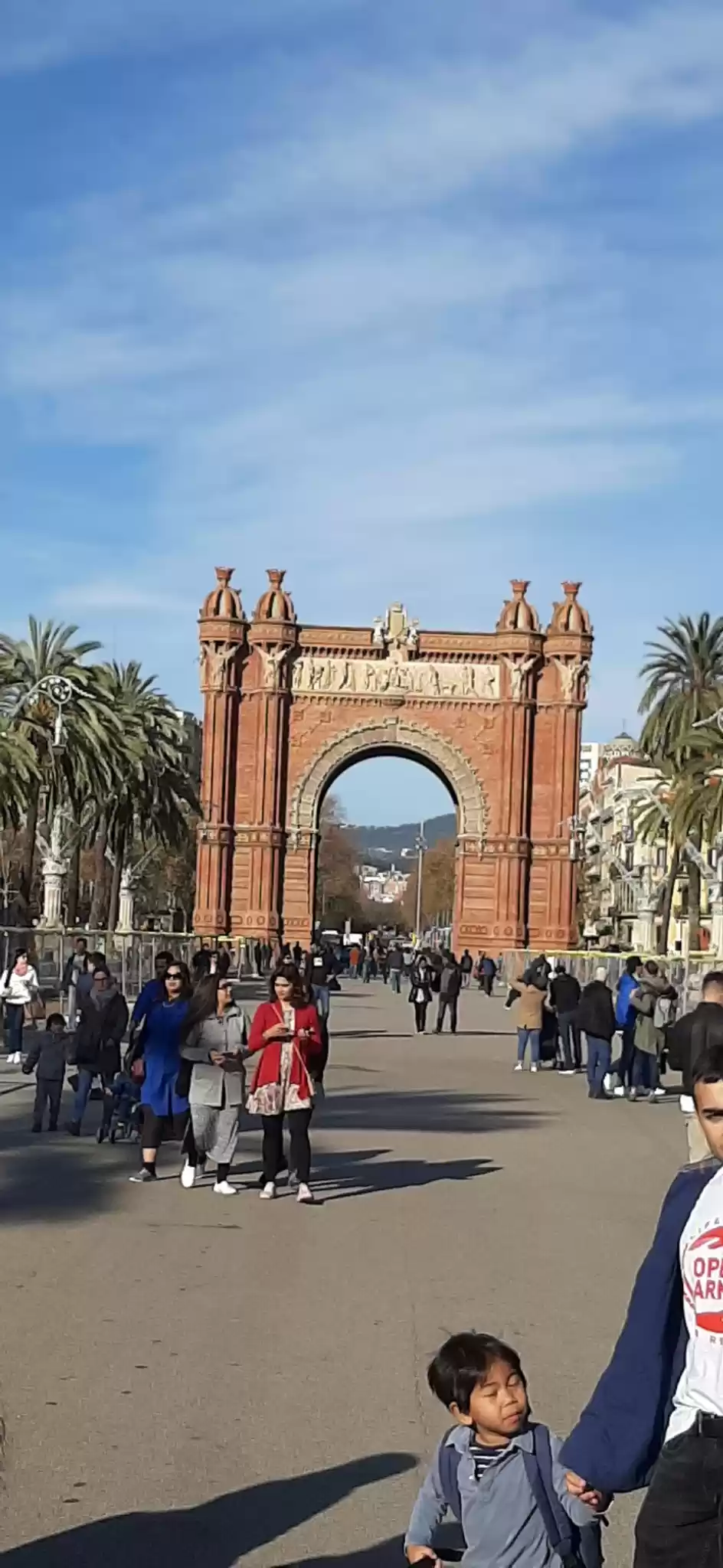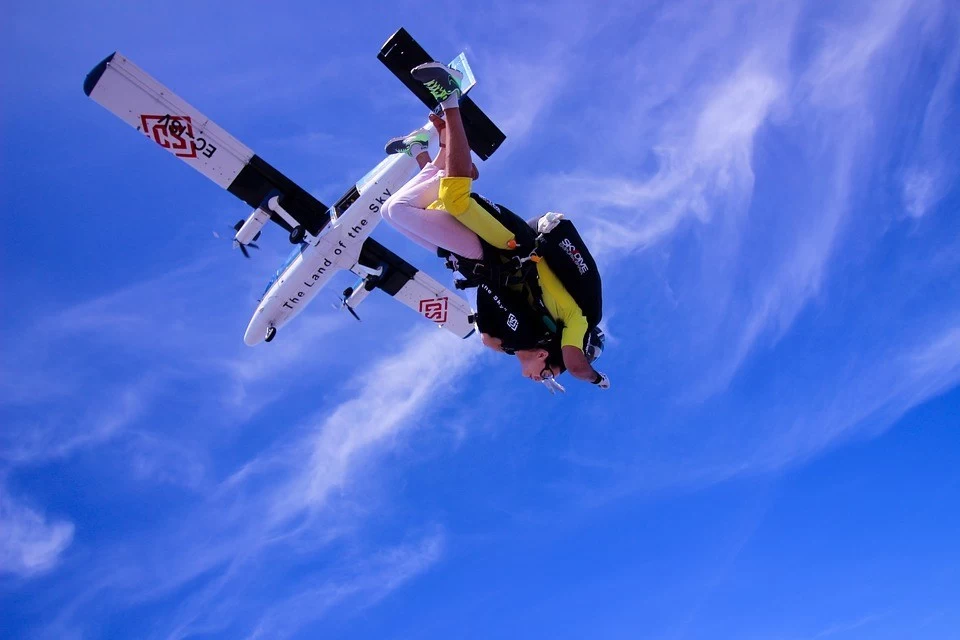First, the Cathedral (or known as Catedral) stands on the site of a former mosque dating back to the 12th century. When you get there, you will first see a courtyard known as Patio de los Naranjos. Here, in keeping with religious practices, Muslims would wash their hands and feet in the fountain found here before praying. As you will also notice around Seville, plus get a scent of, orange blossom trees are lined up within this space. Consecrated as a cathedral in the mid-1200s, the area would be reconstructed as a Gothic church over the course of about a century, with works of art in its ornate chapels and sacristies. A key part of the cathedral is the Tomb of Christopher Columbus. His proven remains are stored inside a raised coffin with four statues as “pallbearers” that represent four former Spanish kingdoms (each were separate of each other) of Castille, Leon, Aragon and Navarra.
To get a higher view of Seville, visitors can also climb up the steps of the Cathedral’s bell tower, La Giralda. You can walk all around the top, and find great scenery at every angle.
When leaving the Cathedral, making a right hand turn to get out onto the street, and across the way is the next marvel to visit: The Real Alcazar. As a royal residence, The Real Alcazar is the oldest Spanish royal palace still in use. You’ll see the gate with a crowned lion on your way in, and after you go through the ticket counter, you’ll end up in the courtyard. Like the Alhambra in Granada, here you will find a smaller version of this palace with mosaics and geometrical patterns. This place has been the home of Spanish kings, each of whom have added their personal touches. It’s also a place of history. Among what’s happened here: Queen Isabelle I dispatched navigators from this palace off on their voyage to the New World. Also, spend time in the gardens here, with beautiful fountains and terraces.
Another spot to go to that’s outside of the city center is the Parque Maria Luisa, where you can walk around the Plaza de Espana.
This plaza was built for the Ibero-American Exposition of 1929, to showcase exhibits in this world’s fair. It’s a huge half-circle with buildings running around it, and over by a moat, there are bridges also representing the four ancient kingdoms of Spain. By the walls of the plaza are the Alcoves of the Provinces, which are tiled alcoves representing different provinces of Spain. The Plaza de España has also been used as a filming location. Scenes for the film Lawrence of Arabia were shot here as well as scenes for Star Wars Episode I: The Phantom Menace and Star Wars Episode II: Attack of the Clones.
